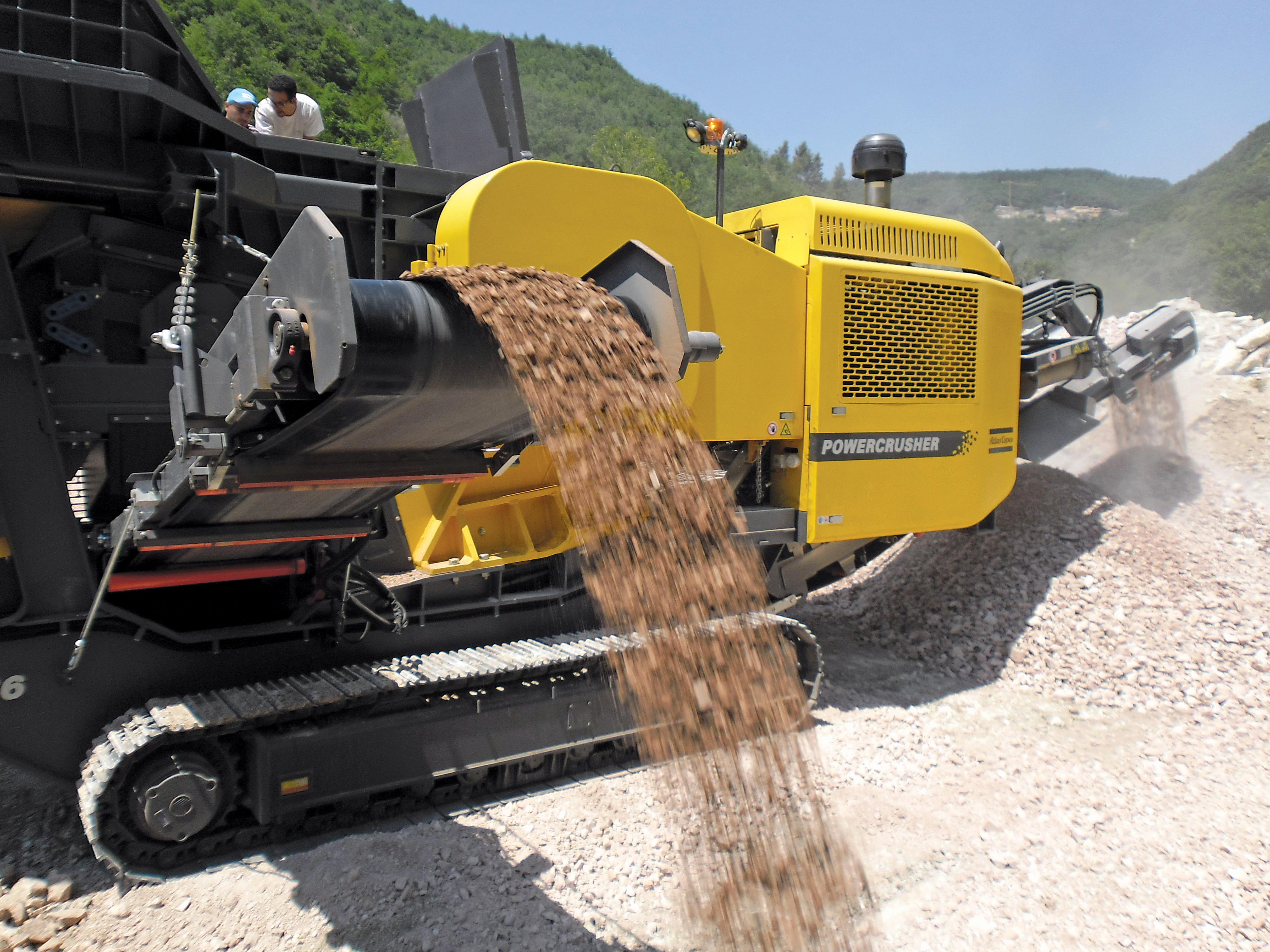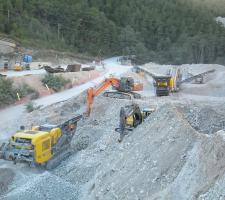
Crushing and screening plant from Atlas Copco Powercrusher is playing a big part in a major Italian highway project. The Quadrilatero Project in the Marche Umbria regions includes the completion and upgrading of two main A road arteries: the Foligno-Civitanova Marche Strada statale SS77 and Perugia-Ancona SS76 and SS318 and the Pedemontana Fabriano-Muccia/Sfercia road.
The scheme aims to reduce the infrastructural deficit across the regions; improve links with the surrounding regions and Europe; ensure connections with existing industrial areas, and improve and increase access to internal areas of the regions.
The project is divided into two large lots with completion expected 2013-2015. Work includes the Quebec 3 construction site of Foligno, Leggiana area of Perugia, which is operated by
In the Umbrian area, the Powercrusher machines, manufactured in St Valentin, Austria, process material extracted from tunnels on the highway to obtain a moderately coarse product (80-90mm) for use in road tunnels as undersoil for water drainage.
It is produced by using two jaw crushers, then moving to the mobile screen that eliminates the fine component, which is reused for other purposes or resold.
The first machine delivered on site was the 34tonne Powercrusher 1055 PC J with a 1,000mm x 550mm input aperture and a crushing capacity up to 200tonnes/hour. It is the smallest of the range and is said to offer excellent transport advantages.
Before entering the crushing chamber, material passes over a screen built into the hopper, while the smaller material falls through the openings under the grid.
To increase production, the 1055 J PC was put next to the 55tonne 6 PC, which has considerably higher performance and which has an aperture of 1,300x800mm. It has a crushing capacity up to 350tonnes/hour.
The 6 PC was chosen because the material to be crushed consists of a high percentage of fine granules requiring a special roughing inlet to improve product quality, and because entering the crushing chamber in large quantities could wear out the jaws over time.
The pre-screener has two independent levels (upper level grill and a net on the lower level) that come with the machine and offer the capacity to remove the thin material before entering the crushing chamber. The unit can be equipped with a screen-box mounted on the main transporter.
The two mills have certain characteristics in common such as the magnetic belt, which is standard, with a permanent magnet to remove reinforcement bars and steel when the crushed material passes the main transporter belt; radio-controlled tracks that allow the movement of machines; the feeding hopper with hydraulic regulation that vibrates using a hydraulic motor with two old fashioned weights; Hardox hopper walls, and a hydraulically folding side conveyor belt.
The main belt (19mm) ‘rip-stop’ is reinforced with steel. All belts are hydraulically foldable and the side conveyor belt can be removed.
The machines have diesel-hydraulics and CAT engines feed the hydraulic pumps and transmission system.
In the summer of 2012, the 26tonne, 15m long HCS 3715 mobile screening unit (the smallest in the range) was added to the existing crushers. Equipped with a twin level pre-screening grid on the hopper to separate the fine material from the larger material and obtain three different sizes, it has a screening capacity of 300tonnes/hour thanks to the discrete size of the floor (3,660mm x 1,500mm). It is also equipped with a CAT engine.
The collaboration between Technoscavi and
A further demonstration of the close collaboration between Technoscavi and Atlas Copco is the latest addition at the site, the 2,800kg FlexiROC T15 R, the smallest of the new generation of wheeled hydraulic drill rigs.
It is used for vertical and horizontal drilling over six feet deep (1.8m) for consolidating walls with nails to install rock fall nets.
Before its arrival all holes were made using manual pneumatic drills often requiring the drill to be tied in slings.
All of the functions of the four-wheel drive FlexiROC T15 R are controlled via remote control, and it is said to have proved ideal for the job, particularly in tight spaces and on uneven terrain.














